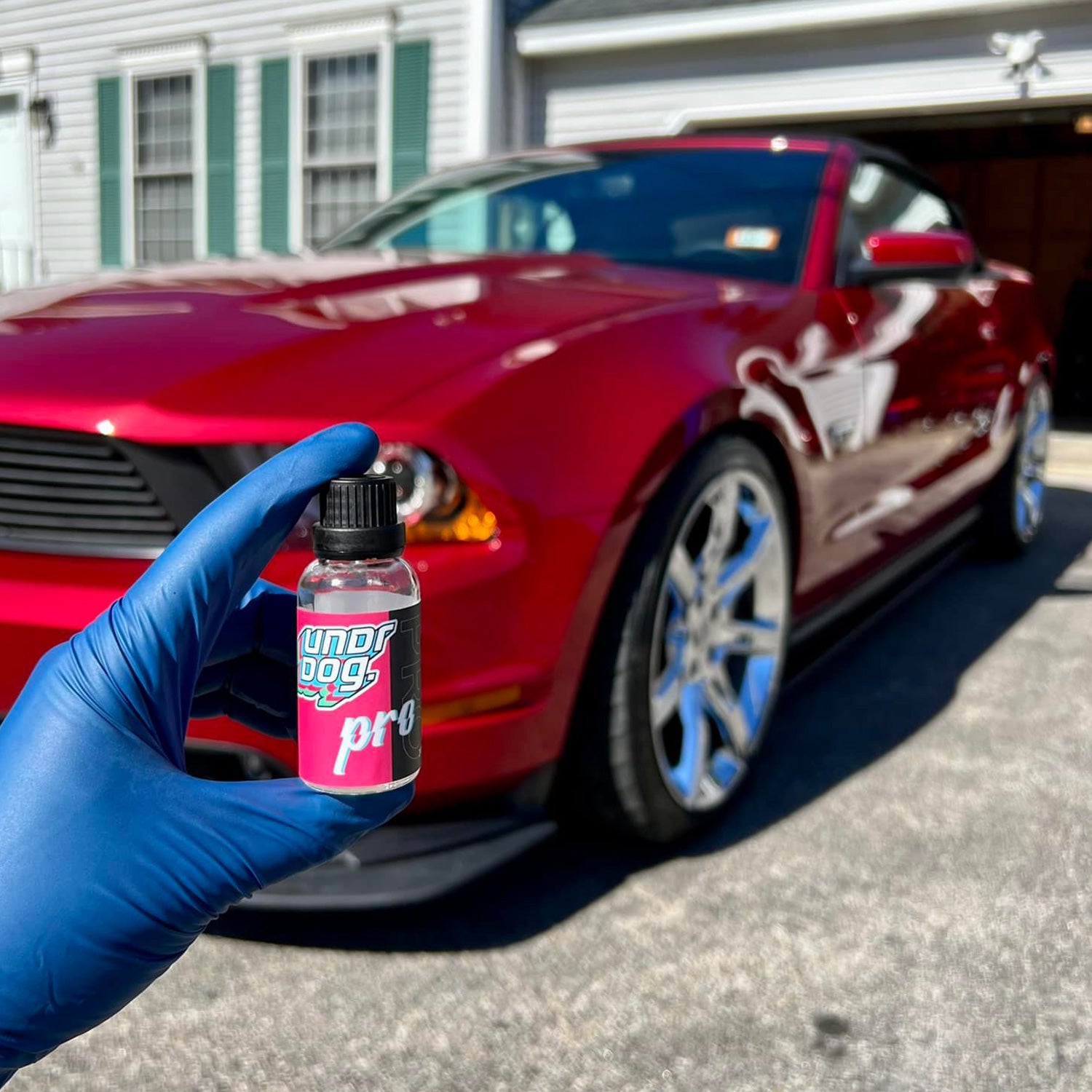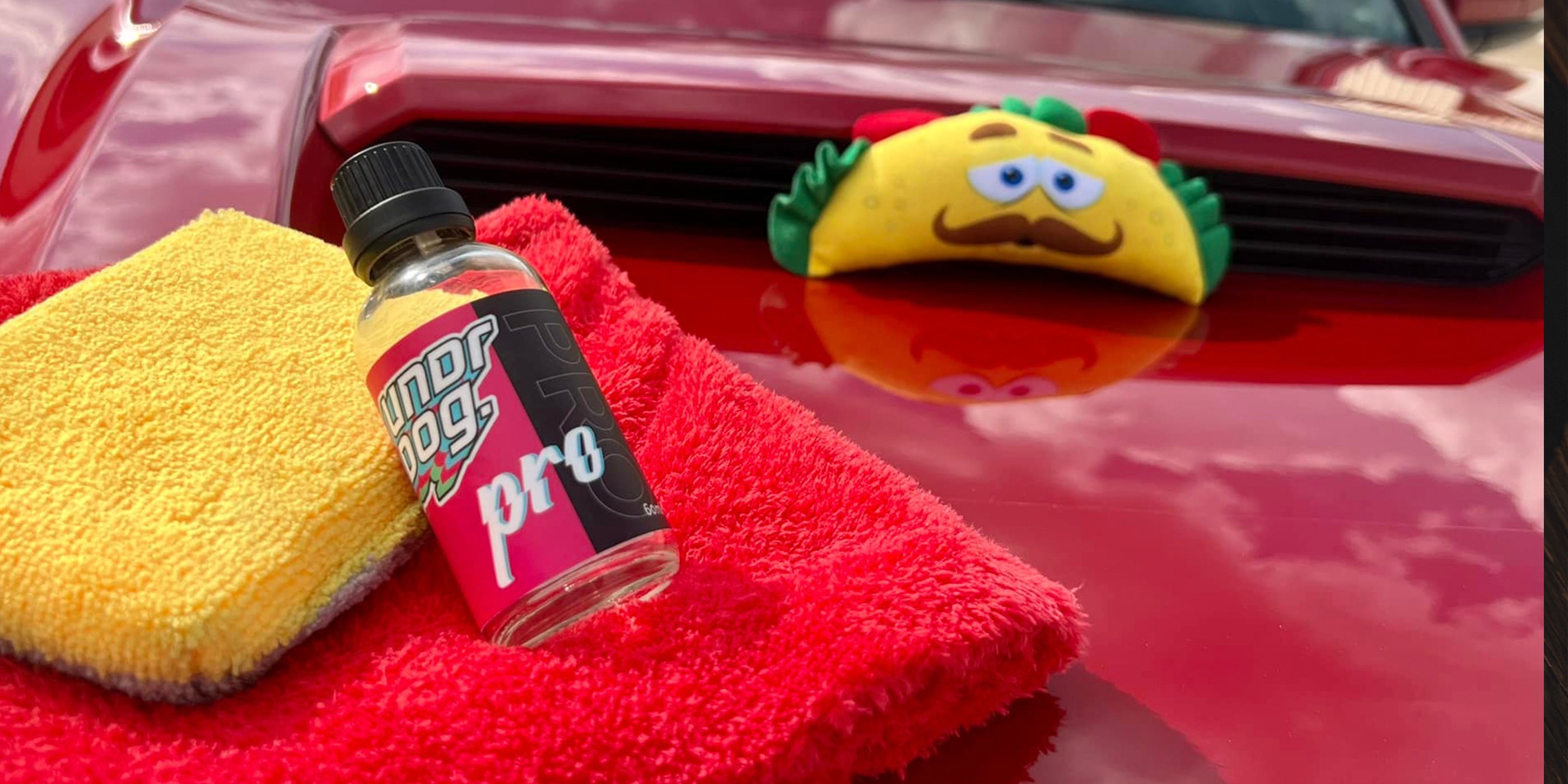Table of Contents
Winter Car Care Is A Must
Not many of us Americans are fortunate enough to enjoy a mild climate year-round.
For most folks throughout the US, the cold season presents multiple challenges when it comes to car care. Freezing temperatures, snow and ice, salt, and road debris are tough on our vehicles.
To prevent damage and ensure that winter doesn’t take a toll on your ride, it’s important to put in some extra effort to protect it.
We’ve put together a list of 13 things you can do to winterize your car and keep it in good shape during the next couple of months.
Examine Your Brakes For Wear & Tear

The condition of your brakes is paramount year-round, but it’s especially important during the cold season. The thing is, roads get slippery when wet and even more so when icy. Because of this, your brakes have to work harder to successfully stop the car. And they won’t be able to do that if the disc or brake pads are worn.
If you’re driving around with worn brakes, you’re exposing yourself and others to potential accidents.
Examine your brakes thoroughly for wear and tear and replace them if necessary. If not, keep an eye out for any changes. If you start hearing grinding noises when stopping or slowing down, or a continuous high-pitched squeal while driving - it’s time to get your brakes serviced.
Swap Regular For Winter Tires
Even if your area doesn’t get a lot of snow, we suggest you get winter tires if the temperature regularly drops below 45 degrees.
Winter tires are engineered to allow high flexibility at low temperatures. They’re made out of soft rubber which enables improved traction while turning or stopping on ice, snow, and even dry pavement.
Contrastingly, the rubber compounds in summer tires harden in the cold. Because of this, their ability to grip the road significantly decreases which can lead to you losing control of the vehicle.
Those of you that don’t experience freezing cold temperatures can get away with all-weather tires even in the depths of winter. Just verify that they’re not worn out. The Department of Transportation recommends replacing tires when they reach 2/32”, but we say aim for a minimum tread depth of 4/32”.
Frequently Check Tire Pressure

Tires lose up to a pound of pressure per square inch with every 10-degree drop in temperature. For that reason, it’s imperative that you keep track of your tire pressure as the weather get colder.
Driving on underinflated tires can lead to premature tire failure. Your tires won’t be able to grip the road properly, even in dry conditions, which means steering will become a lot harder.
To avoid potential accidents, we suggest checking your tire pressure every week during winter months. If you find that one or more of your tires are low on air, fill them up to the recommended PSI asap.
Don’t believe the myth that deflated tires provide better traction. It’s nonsense.
Keep Your Gas Tank Half-Full
There are two main reasons why you should always have at least a half-full gas tank during winter.
1. In the event of an emergency like getting stuck in a heavy snowstorm, you won’t run out of gas and will be able to keep warm.
2. To prevent water from getting inside your tank. This happens through condensation, especially in warm spots like near the exhaust system. When it does and your tank is near-empty, the moisture leads to rust buildup which can cause serious issues down the line.
Use Winter Weight Engine Oil
Motor oil serves to lubricate all of the moving metal pieces inside your engine. This minimizes friction and reduces component wear to prolong engine life and prevent breakdowns. Apart from that, motor oil aids the engine’s cooling system and helps keep it clean.
However, motor oil thickens in the cold, which can negatively affect engine performance.
To avoid potential issues, use an oil that has a "W" in the viscosity index, meaning it’s designed for winter use. This type of oil is thinner than your regular one, which allows it to flow freely through the system.
Quick Tip: Check the owner’s manual to find the manufacturer’s recommendation on oil viscosity for the changing seasons.

Ensure Your Washer Fluid Is Non-Freezing
Just like gas, you should always have a solid supply of washer fluid available during the winter months.
Windshields get dirty pretty easily during this time of year due to all the salt and snow. This reduces visibility, and there are only a few things more dangerous than low visibility when driving.
To keep it at an optimal level, you’ll have to use your washer fluid often, which means you’ll get through it fairly quickly. You don’t want to run out, so keep some extra in your trunk.
When choosing a washer fluid, always check the label to find its freezing point. And if you live somewhere super cold, make sure that the fluid you pick has antifreeze components.
Flush And Fill The Engine Coolant
While we’re on the topic of antifreeze, check its levels and inspect for potential leaks.
Engine coolant is what prevents your engine from freezing, so it makes sense that “flush & fill” is people’s first thought when it comes to winter car care. But if your car is relatively new and you service it regularly, your antifreeze levels are probably fine.
On the other hand, if you aren’t on top of your car maintenance schedule or have another reason to doubt your coolant, we strongly recommend that you do flush and fill. The same goes for those of you that are planning on visiting or moving to a climate much colder than what you’re used to.
Inspect Your Windshield And Wiper Blades

Cracks in car windshields happen more often than you might think. The main culprits are things like flying rocks, extreme temperature changes, hail storms, and unfortunate car accidents. To avoid wind, rain, and snow from entering your cabin, inspect your windshield for cracks. If your vision gets hampered when driving, check the defroster and the climate control system.
And don’t forget your wiper blades! You need them in great shape for the winter ahead so that your windshield stays free of ice, snow, dirt, and debris that gets kicked up from the road. Now, manufacturers say you should replace your car wipers every year. This is because worn-out wipers need more cleaning cycles to do the job, use up more washer fluid, and can even cause damage to the windshield. But if you take good care of your wipers, you can extend their life significantly. We suggest you clean them with a dedicated auto glass cleaner whenever you’re washing your car.
When you notice that your wiper blades are leaving streaks, missing spots, or not doing their job in any other way, it’s probably time to replace them. If you live somewhere with a lot of snow, consider investing in winter wipers or models with a beam blade. In any case, never use your wiper blades to remove ice or frost from your windshield - use a plastic ice scraper instead.
As for leaving your wipers in the raised position when parked to prevent them from freezing, we say don’t take this advice. This method can have more drawbacks than benefits. It can wear out the spring in your wiper arms and make them less effective. Plus, you risk windshield damage if something knocks the blades down abruptly.
Check All Exterior Lights (Especially Headlights)
Winter has the shortest daylight hours, which means we all drive in the dark much more often. To ensure good visibility and prevent accidents, check if all of your exterior lights are functioning properly.
Pay close attention to your headlights. If they’re yellowish and foggy, we suggest investing in headlight restoration. Other things we recommend as preventative measures are adjusting & aligning your headlights, cleaning them before hitting the road, and installing a protective coating. This will keep your headlights in optimal condition for longer.
Make Sure Your Battery Is Strong

Car batteries endure a lot of stress in cold weather. Therefore, a weak battery in winter is a liability.
To make sure your car battery is strong enough to last throughout the season, especially if it’s +3 years old, test it. The easiest way to do this is by turning on your headlights and seeing if they’re dimmer than usual. Another method is to turn the ignition key and notice if the engine is cranking slower than usual. You can also check for signs of wetness and corrosion in the casing.
In case you find anything suspicious, it’s best to load-test your battery with professional equipment at a local auto shop or store. If it’s going south, replace it as soon as possible to avoid getting stranded in the middle of nowhere.
Quick Tip: As an extra measure of precaution, we recommend always keeping jumper cables in the boot.
Install A Protective Coating
Having a protective coating installed on your vehicle is incredibly useful all year round, but it can be a true lifesaver during the winter.
Coatings are the latest and greatest in paint protection technology. They’re designed to effectively protect automotive paint, but also leather, plastics, metal, wood, and glass from environmental, chemical, and mechanical damage.
These products add an extra layer of protection to your vehicle’s surfaces, that acts as a durable barrier to the elements, as well as dirt, grime, salt, oils, and more.
On top of that, coatings provide a striking aesthetic enhancement and make car maintenance a breeze. Thanks to their hydrophobic and heatproof properties, contamination and dirt simply slide off the vehicle!
Stick To A Regular Washing Schedule
Whether you have a protective coating installed or not, winter is not the time to neglect your car washing schedule.
Actually, car care should be prioritized even more during the cold season.
Road salt prevents accidents on icy roads, but it also causes long-term damage to vehicles. As you drive, it gets flicked up underneath and on the sides of the car. If you allow the salt to remain there for some time, it starts eating away at your vehicle.
To avoid or at least mitigate any long-term corrosion of your vehicle, weekly or bi-weekly washes are the way to go.
Now, hand washing is the ultimate way to clean your vehicle. Just make sure that the temperature is 40°F or higher and that you’re using a ph-balanced car soap that provides good lubrication.
If proper handwashing sounds like too much of a hassle in the freezing cold, get in touch with a local car wash that does mobile hand washes. As a quick fix, you can resort to a touchless car wash now and then. Just avoid contact drive-thrus - they do more harm than good.
Keep An Emergency Kit At Hand
Even if your car is brand new and your take great care of it, unpredictable winter weather could still leave you stranded in the cold. Hence, it’s a good idea to either buy or build an emergency kit to store in your trunk throughout the season.
Here are some things that you should include in your emergency kit.

Jumper cables
Foldable Shovel
Ice Scraper
Road Flares
Tire Chains
Tow Rope
Flashlight
Matches
First-aid Kit
Bottled Water
Long-lasting Food
Gloves & Hat
Blankets
Phone Charger
Washer Fluid
Antifreeze
In Conclusion
Winter, even a mild one, is harsh on your beloved ride. Because of that, while proper car maintenance is important year-round, it’s especially important during the cold season.
To keep you and your passengers safe, protect your vehicle from unnecessary damage, and avoid expensive repairs, follow these 13 simple winter car care tips.





